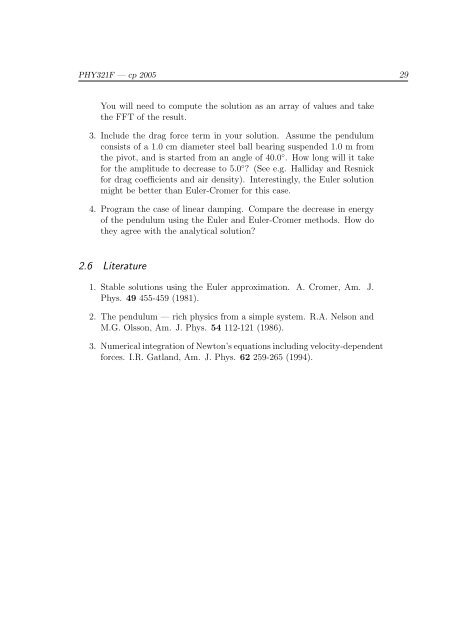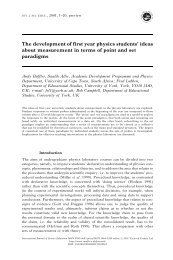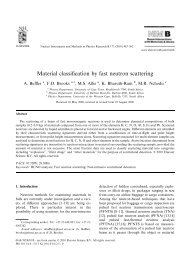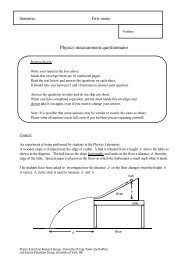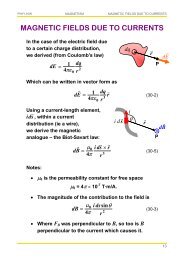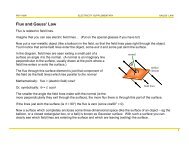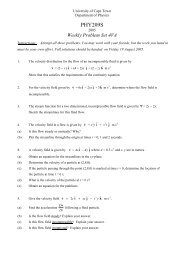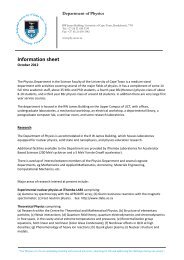Create successful ePaper yourself
Turn your PDF publications into a flip-book with our unique Google optimized e-Paper software.
PHY321F — cp 2005 29<br />
You will need to compute the solution as an array of values and take<br />
the FFT of the result.<br />
3. Include the drag force term in your solution. Assume the <strong>pendulum</strong><br />
consists of a 1.0 cm diameter steel ball bearing suspended 1.0 m from<br />
the pivot, and is started from an angle of 40.0 ◦ . How long will it take<br />
for the amplitude to decrease to 5.0 ◦ ? (See e.g. Halliday and Resnick<br />
for drag coefficients and air density). Interestingly, the Euler solution<br />
might be better than Euler-Cromer for this case.<br />
4. Program the case of linear damping. Compare the decrease in energy<br />
of the <strong>pendulum</strong> using the Euler and Euler-Cromer methods. How do<br />
they agree with the analytical solution?<br />
2.6 Literature<br />
1. Stable solutions using the Euler approximation. A. Cromer, Am. J.<br />
Phys. 49 455-459 (1981).<br />
2. <strong>The</strong> <strong>pendulum</strong> — rich physics from a simple system. R.A. Nelson and<br />
M.G. Olsson, Am. J. Phys. 54 112-121 (1986).<br />
3. Numerical integration of Newton’s equations including velocity-dependent<br />
forces. I.R. Gatland, Am. J. Phys. 62 259-265 (1994).


